To view the presentation slide show, click here
In this presentation, I tell the story of our company through the lens of brand dominance. The presentation includes three modules. First, I demonstrate the magnitude of brand dominance we achieved and the pathway to its accomplishment. I break the brand down into three iterations and the triggers for each. I review the metrics that enabled progress. Next, I define what a brand is – not what most entrepreneurs think. Finally, I discuss how to effectively communicate the brand to the marketplace. I begin with a promise to the group that they can also build a dominant brand.
Module 1
Company History
Here, I give a brief overview of the history of the company:
I founded the company in 1993 as a bootstrapped startup. It was designed and built for the long-term, focusing on durability. It employed roughly four hundred people at its acquisition at the end of 2019. At this time, the company had a dominant market share in what is otherwise a fiercely competitive industry.
In 2018, the Washington Post conducted a brand awareness survey in the Washington DC and Baltimore marketplaces. They asked the question of 1,000 consumers – “when considering the purchase of window coverings, what retailers come to mind?” Respondents could list up to five retailers. In total, respondents mentioned twenty-six specialty retailers. ‘Next Day Blinds’ had a dominant portion of the mentions.
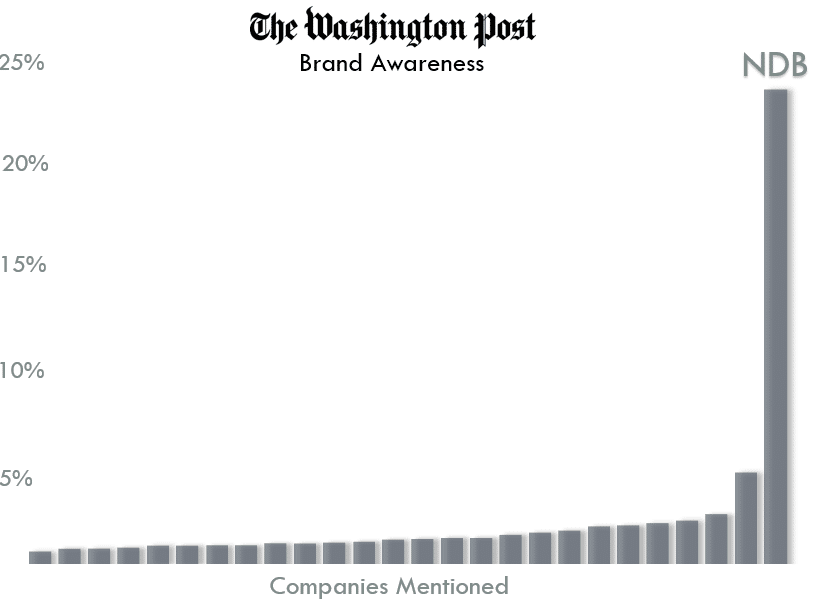
The brand awareness revealed in the Washington Post survey manifested itself as ‘share of market.’ Next Day Blinds enjoyed a dominant market share.

However, a dominant market share is not the same as a dominant brand.
The First Brand: Start-up, 1993 – 1998
The first iteration of the Next Day Blinds brand reflected its immature, bootstrapped condition as it entered the marketplace. This brand needed to achieve quick results, generating revenue immediately and doing so with minimal cost and overhead. The strategy out of the gate was to buy market share with low prices and much response-based advertising. To do so, the company had to be extremely lean. This brand captured an original rationale of the business model, which was to utilize the deeply integrated margins to pass savings on to customers and fund response-driven advertising. The brand was positioned as a low-priced commodity.
During this time, running lean was vital. As executives, we worked ‘in,’ rather than ‘on’ the business. I did everything from building blinds during the day to doing installations on the weekends. I often worked on the sales floor of a store.
It also helped that we hit the market at the right time. We had significant tailwinds with a strong economy and a booming housing market.

From the beginning, we were obsessed with metrics. We measured everything. A critical measure of brand dominance was ‘buying share’ versus ‘earning share.’ To achieve this measure, we estimated our selling prices relative to the average marketplace prices for similar products and then our advertising to sales ratio (our advertising to sales ratio included store rents and related expenses). As expected for an undercapitalized commoditized startup that needed to generate revenue quickly, our selling prices were low, and our advertising to sales ratio was high. This market approach demonstrated that we were buying rather than earning market share.

Competition quickly came into our marketplace. At this time, the company was still in startup mode. It was undercapitalized and unsophisticated. The competitors were well-capitalized and more sophisticated. They had an aggressive approach to capturing share. Considering the disparity, I was sure of the demise of our company, thinking we had no chance for survival.
This situation effectively ended the iteration of our first brand. The beginning of the second brand iteration started with our first process of discovery. It was discovery of our business model. The discovery process answered a basic question: “Based on our business model, what can we do that our competitors cannot, that has real value for our customers?” The answer to this question took us into the second brand iteration.
The Second Brand: The Business Model, 1999-2014
To answer what had real value for our customers, we engaged a ‘top tier’ national advertising agency to conduct market research. They initiated a program of focus groups and market surveys. As a result of the research, we changed our model rationale from ‘low price’ to ‘added value.’ We adopted a mantra of ‘better before cheaper,’ and we raised our prices, ensuring we made improvements to provide a commensurate experience.
Having made these changes to the experience, we changed our advertising to effectively communicate the new model rationale. And finally, we summoned the courage to take the company deep into debt and into a negative equity position.
Based on our business model, the specific answer to the question of what we could do that our competitors could not was: Expedience to market combined with an integrated customer experience, superior warranties, and a higher level of custom that we called ‘custom tailoring.’
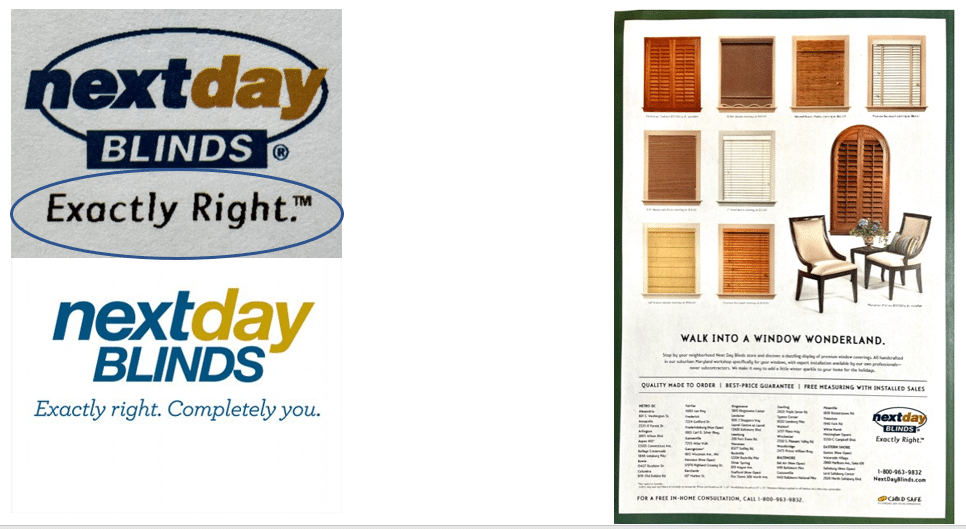
In answering the question of what we could do that our competitors could not, we understood that the power of our business model was in leveraging its integration. The added value for the customer was not within any of the specific business units – retail, manufacturing, or service. It was in the relationships between the units. The company developed a proprietary operating system to leverage these relationships. Writing our own software optimized the depth of integration and the free flow of information between the business units. From the very beginning, we were in the software business, building our POS, ERP, and operating systems in-house through an ‘outside-in’ iterative process. Through this process, we fully leveraged the relationships between the business units.
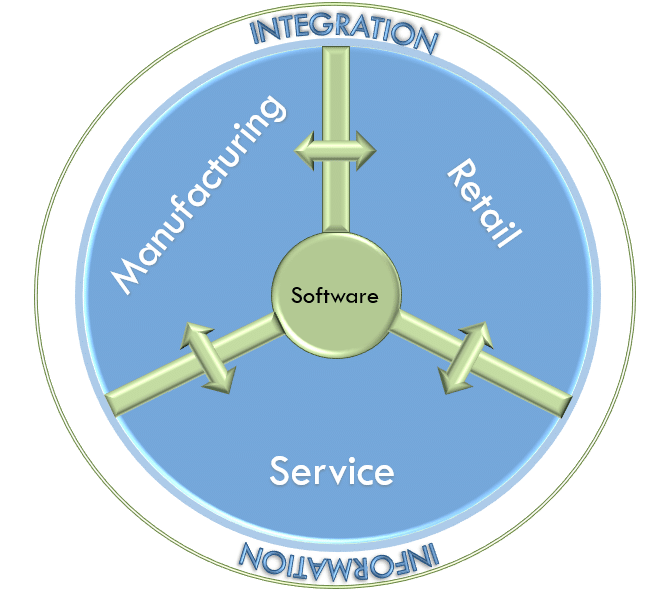
Through the discovery process of our business model, we began to understand that there are two fundamental strategies by which companies go to market. The choice between these strategies largely determines the brand. Companies can target a price and build an experience around that price – or companies can target an experience and attach a price to that experience. In the company’s first brand iteration, we did the former. In the second, we did the latter. This distinction enabled differentiation and added value at the same time – and enabled survival against all odds.
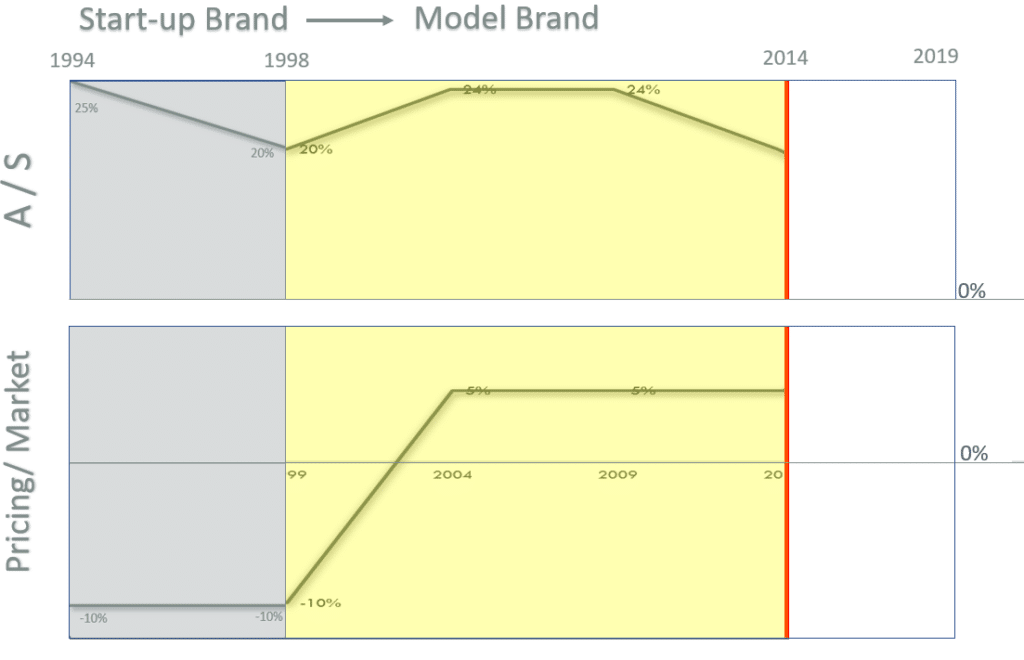
The Third Brand: The Business Culture, 2015 to acquisition.
Having earlier survived the threat from major competitors and then the financial crisis in 2008, the company was now in a position to thrive. However, to do so would require a new journey – a journey focused on education and self-improvement. So, in 2013, I set upon a mission of personal growth. I practiced mindfulness and contemplative practice with outside coaching to be a more conscious leader. An outcome of the training was transitioning the organization’s orientation from shareholder-first to stakeholder-first. This change in direction fundamentally changed the culture of the company.
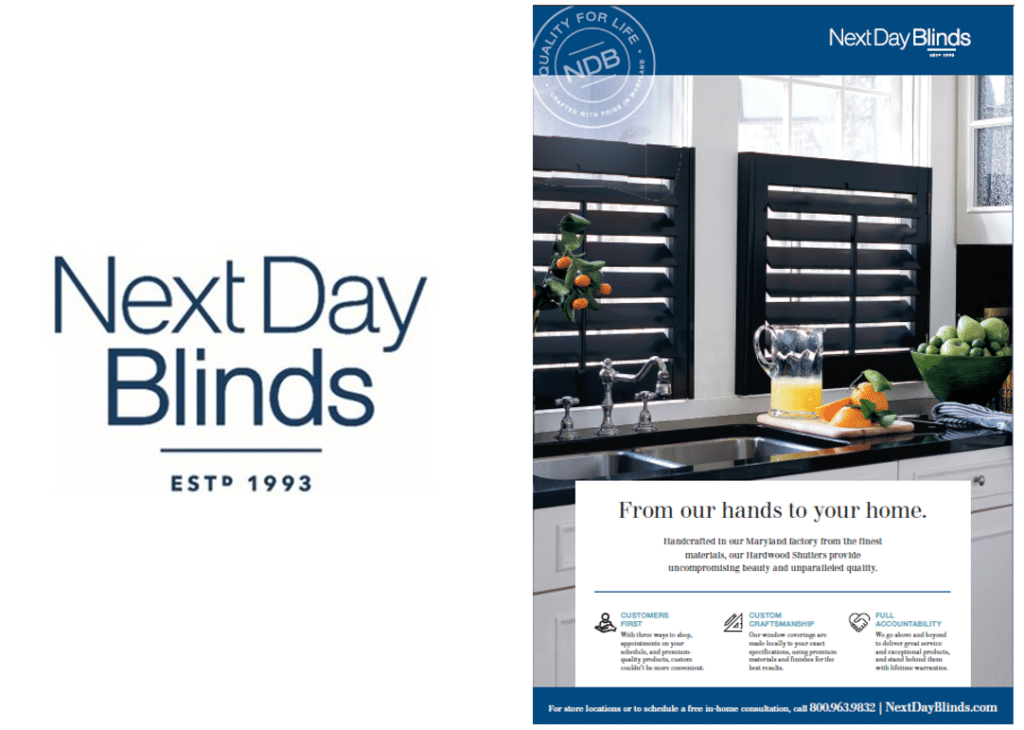
With a change in cultural orientation, the company could attract and hire a new executive team – notably a new company President and Vice President of Human Resources. New and highly-talented leaders effectively cascaded the tenets of an evolving culture across the company. Our Vice President of Human Resources recommended an engagement with a consultancy, The Table Group, to help facilitate a process for organizational health. With this engagement, we effectively discovered the company’s Core Purpose and its Core Values.
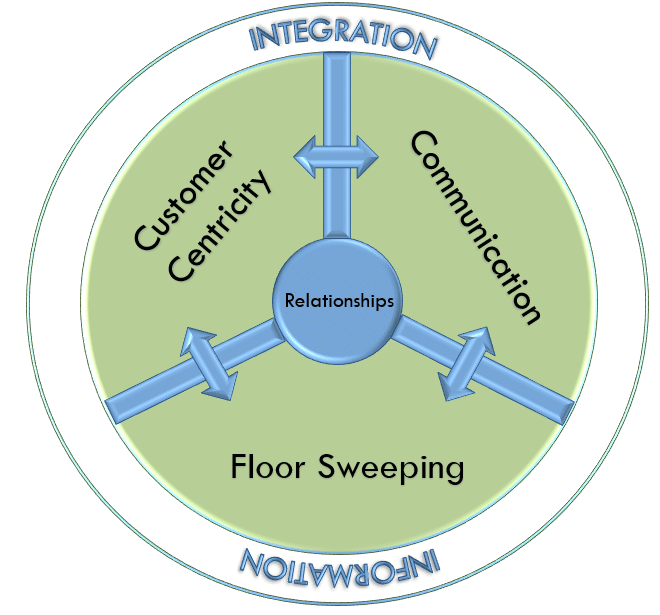
After effectively discovering its core purpose and core values, we had to effectively communicate them across the organization. There was a requirement for clarity and alignment of purpose and values for effective communication. To achieve clarity and alignment, we developed a Playbook – and through its use, we were able to cascade communication across the entire organization. The Playbook content provided clarity, and alignment across the organization was facilitated by effectively communicating the Playbook’s content.
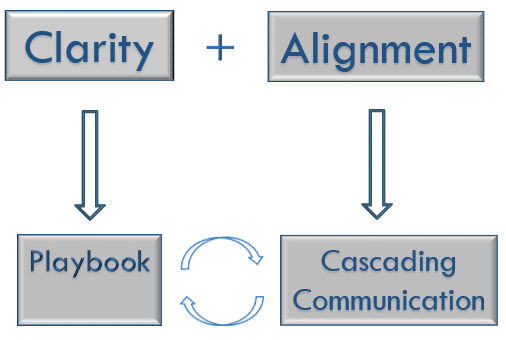
And the third brand, the Culture Brand, was communicated through a new aesthetic and visual.
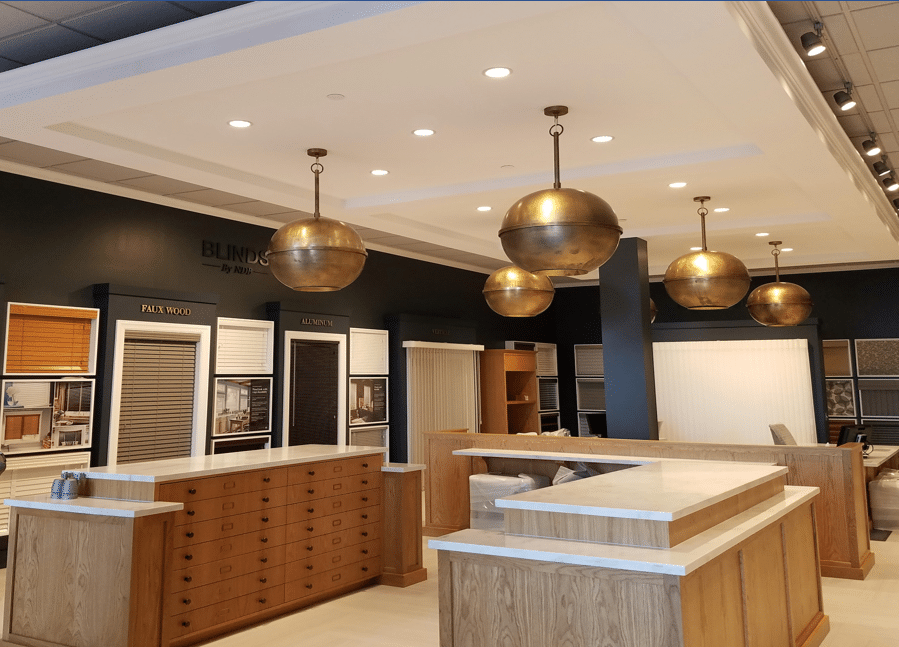
From the work of its new executive team and its cultural evolution, the company in its third brand iteration was now seeing outstanding results as a measure of brand strength.
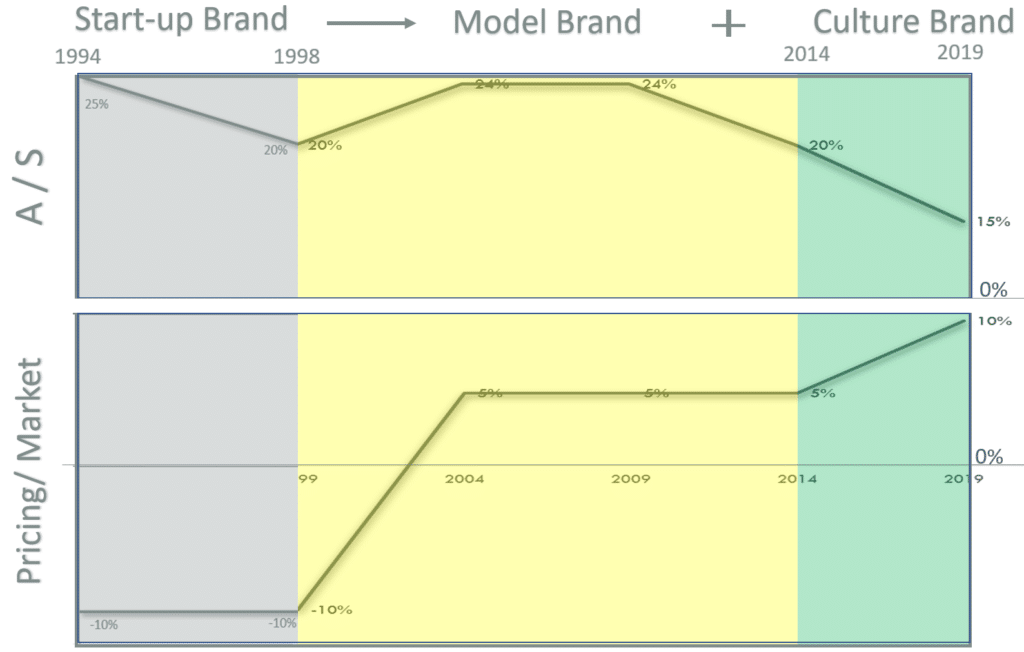
Module 2
The pathway to strength and dominance
For a brand to be dominant, it must first be authentic. An authentic brand is a manifestation of a company’s core purpose. Over time, an inauthentic or disingenuous brand is always exposed. This exposing can happen very quickly with today’s open sourced social network, making inauthenticity a dangerous condition.
A company’s core purpose answers the question, “Why do we exist?” Answering this question is an arduous process of discovery. An authentic brand will be a manifestation of the answer to this question. In our company, we discovered that “we exist to delight customers with a uniquely superior experience.”
The core purpose is manifest in the business model and the business culture. Therefore, the brand is authentic to the extent that the business model and the business culture combined are the manifestation of the core purpose. The business model plus the business culture- combined is the brand.
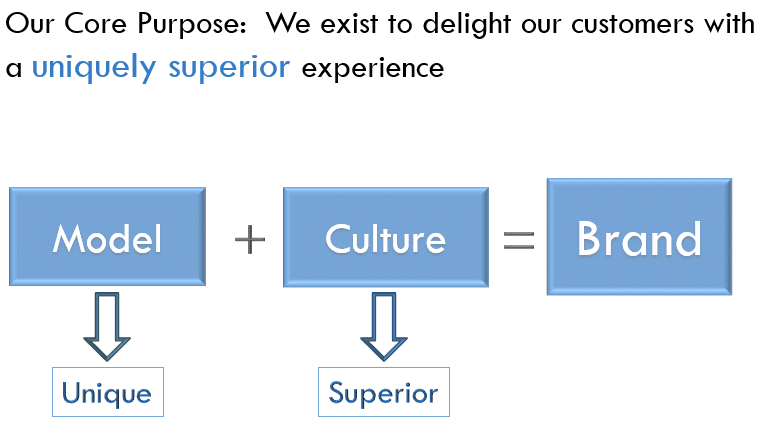
For example, in our company, the ‘unique’ part of the core purpose was satisfied by the business model. It was what we ‘could’ do that our competitors ‘could not.’
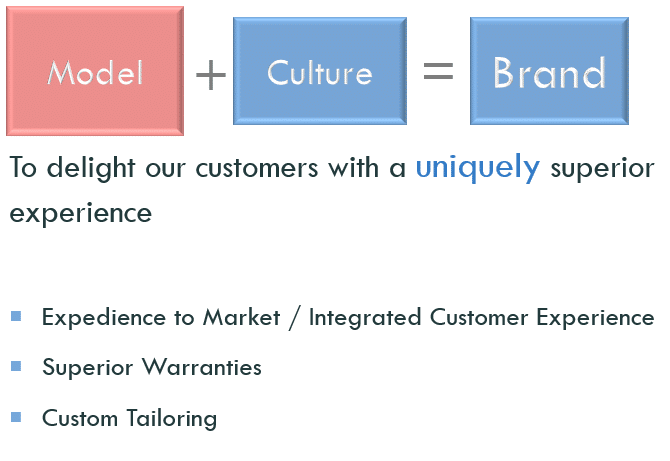
The business culture satisfied the ‘superior’ part of the core purpose. It was what we ‘would’ do that our competitors ‘would not.’

After answering the questions ‘based on our business model what can we do that our competitors cannot, that has real value for our customers?’ (the model brand) – and ‘why do we exist?’ (the culture brand), we can understand our brand in authentic terms.

Brand Strength
With an understanding that the brand is the business model plus the business culture – and having built the model and the culture wheels, we know the model’s strength is its ability to integrate its features through software. We also know the strength of the culture is its ability to integrate its values through relationships. Now, the next step is to integrate the model and culture wheels. In this relationship, we find brand strength proportionate to the effectiveness of the integration. The effectiveness of this integration will present itself as seamless, free-flowing information between the wheels. This information self-organizes into brand strength proportionate to the effectiveness of the integration.
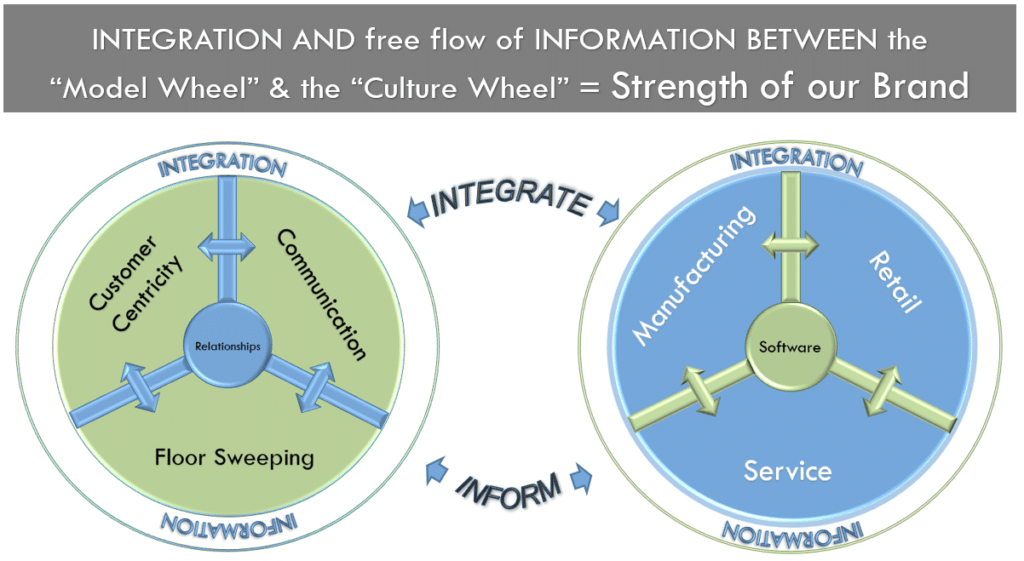
Module 3
Brand Domination
To this point, we have, through our discovery processes, built a strong model wheel and a strong culture wheel. We’ve built a strong brand by effectively integrating the two wheels so that there is a free flow of information between them, and they can now constructively inform each other. However, a strong brand cannot become a dominant brand until effectively marketed. When we add brand communication to the brand, we have branding – how the brand is perceived in the marketplace. For a brand to be dominant, it must be effectively communicated to the marketplace, resulting in a high level of branding effectiveness.
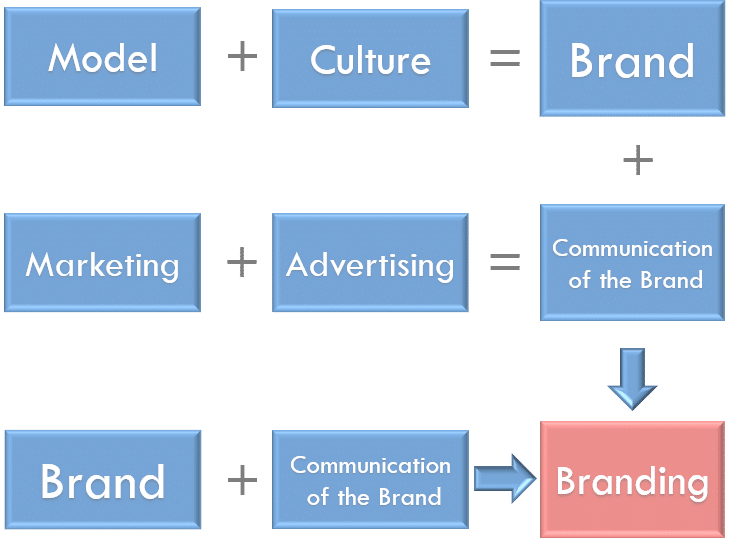
Effectively communicating a brand to the marketplace requires critical areas of alignment between the brand and its communication to the marketplace. The areas of alignment include brand messaging, advertising channels, advertising frequency, and pricing alignment. In the presentation and workshop, we spend time with each of these – however I give disproportionate time and attention to pricing alignment. I discuss the effect of price on brand perception and how to find the pricing delta – the optimal price for our product or service.

Effectively communicating a brand to the marketplace requires converting rational deliberation into emotional resonance. The process of discovering our core purpose and its structural and cultural manifestations (second module) is a rational process. These manifestations are the business model and the business values. Together they are the brand. However, the process of effectively communicating this brand to the marketplace is an emotional process. It requires the conversion of the rational deliberation that is our brand’s discovery into the emotional resonance that is our brand’s reception. This is something the best advertising agencies do well.
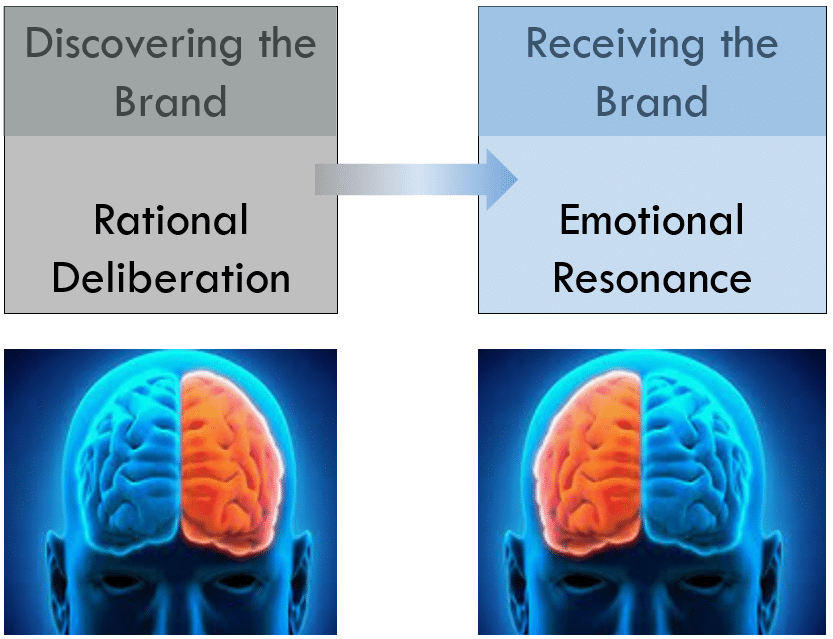
I conclude the workshop with an animated summary that demonstrates branding effectiveness as a function of the value proposition of the brand and the communication of the brand to the marketplace. The value proposition of the brand is represented on the X axis. It is understood and optimized from the discovery processes in the second module of the workshop. The communication of the brand is represented on the Y axis. It is understood and optimized from material in the third module of the workshop.
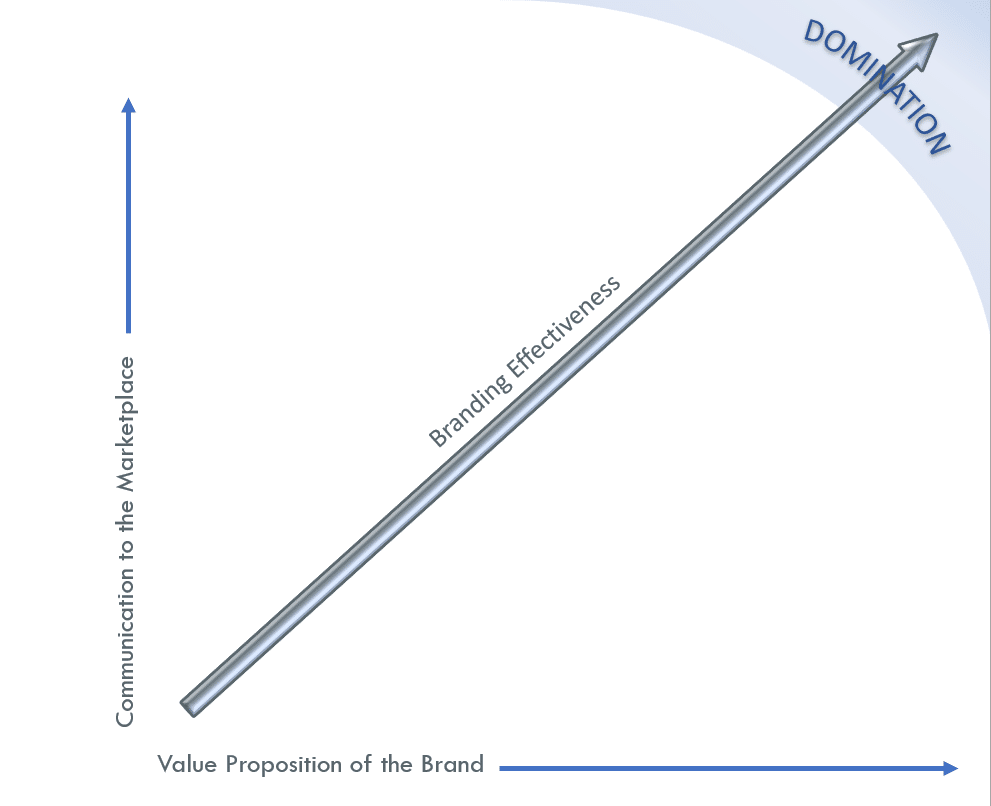
This concludes the journey of our brand dominance in a competitive marketplace. I salute you for caring enough about your own brand to have had a willingness to be changed by what you’ve seen and heard in this workshop.

